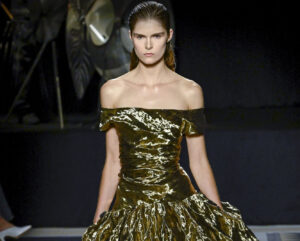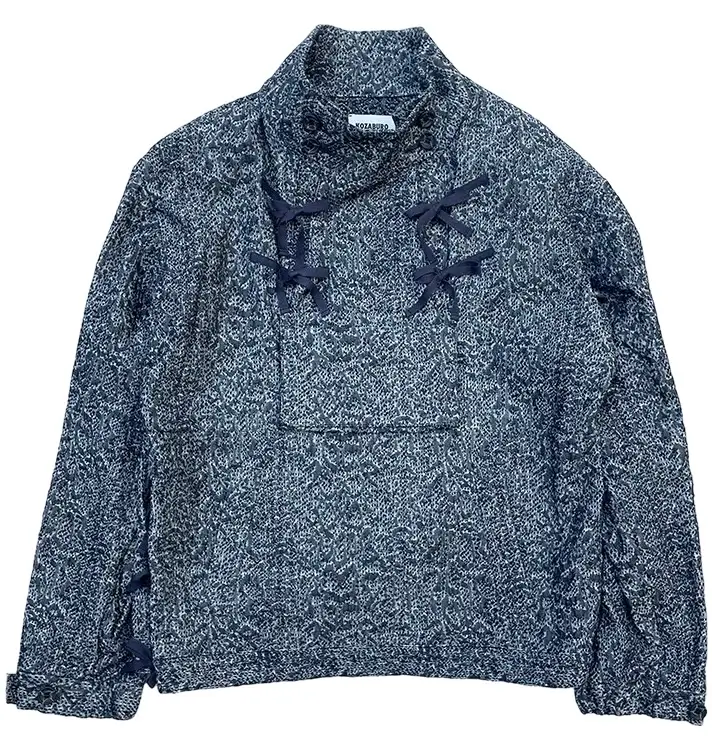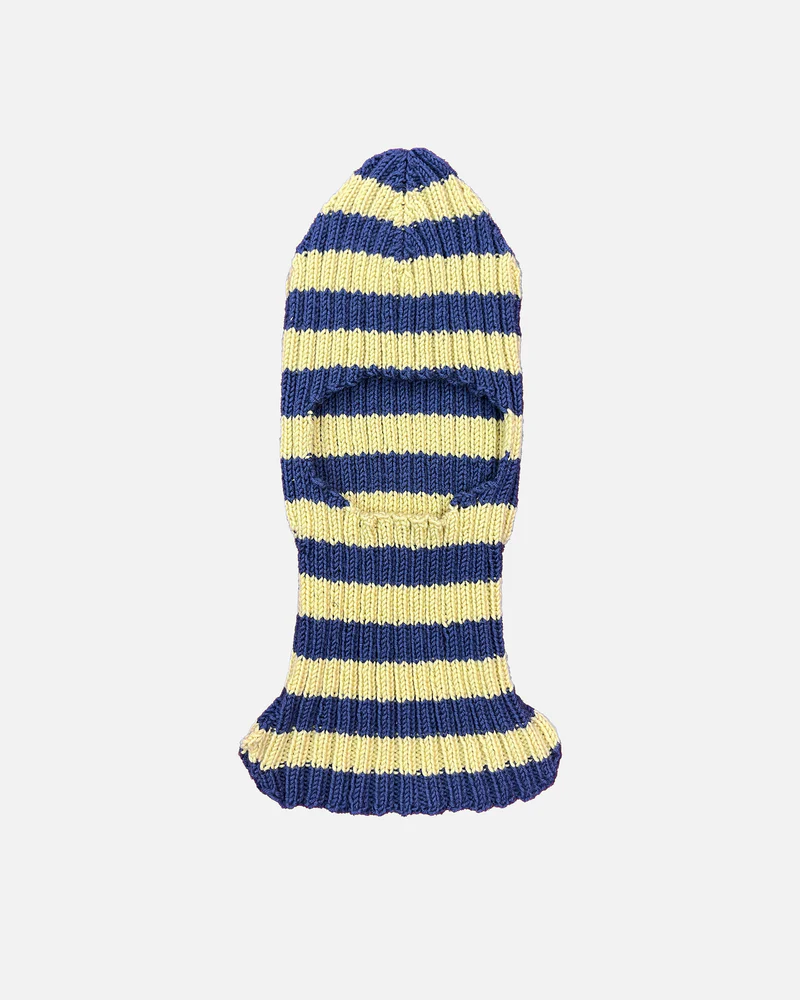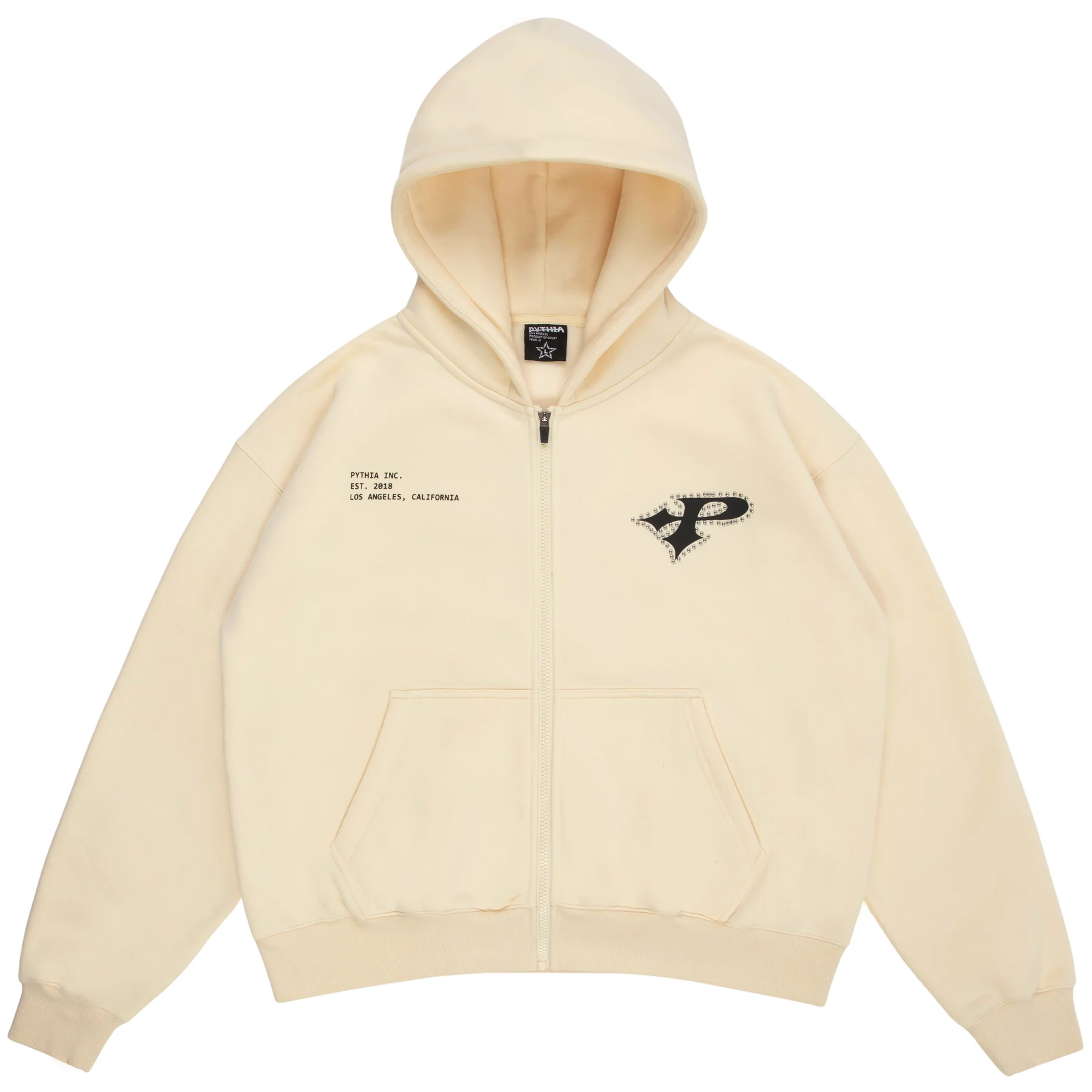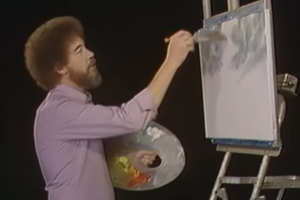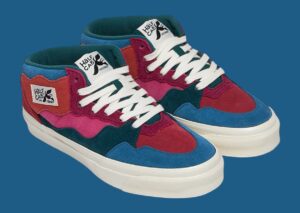When British designer Peter Copping was announced as the new artistic director of Lanvin, the fashion world took note. Known for his refined aesthetic and deep understanding of luxury craftsmanship, Copping’s return to the industry was met with excitement and high expectations. His debut collection at Paris Fashion Week was a testament to his ability to merge the house’s rich 1920s and 1930s legacy with contemporary elegance.
The applause at the end of the show wasn’t just a customary gesture; it signified genuine appreciation for a designer who, at 57 years old, remains one of the most respected figures in the industry. Whether working as a frontman or a behind-the-scenes creative force, Copping has built an impressive career, and his first Lanvin collection underscores why he remains so well-regarded.
Honoring Jeanne Lanvin’s Legacy
Stepping into the role at a house like Lanvin means engaging with a brand deeply rooted in history. Jeanne Lanvin, the maison’s founder, was a pioneer in feminine, intricate, and highly detailed fashion, and her work in the 1920s and 1930s continues to influence designers today. She was one of the earliest couturiers to embrace Art Deco motifs, intricate embroidery, and luxurious draping, all of which played a role in Copping’s debut.
Instead of imposing a radically new vision, Copping chose to honor Lanvin’s DNA. He revisited house signatures like the robe de style, capes, and delicate ribbon detailing, infusing them with a fresh perspective. The result was a collection that celebrated femininity while maintaining a modern sensibility, ensuring it was relevant to today’s luxury clientele.
Collection Highlights
Copping’s debut showcased a masterful balance of tradition and innovation. Some of the standout pieces included:
•Metallic Lurex Dresses: A nod to Lanvin’s love for shimmer and fluidity, these dresses exuded glamour while retaining a sophisticated silhouette.
•Petaled Skirts & Draped Ribbon Dresses: Echoing Jeanne Lanvin’s couture craftsmanship, these designs played with layering and structure, offering a contemporary take on archival designs.
•Gold & Silver Detailing: The metallic hues weren’t just embellishments—they were statements of luxury and opulence, reminiscent of Art Deco influences.
•Tailored Menswear Elements: While primarily a womenswear collection, Copping introduced menswear-inspired tailoring, such as structured coats and oversized blazers, as a way to balance softness with strength.
One particularly striking look was a black velvet cape with silver stud embellishments, worn over a sheer blouse and perfectly tailored trousers. This piece encapsulated Copping’s vision—a fusion of old-world glamour and modern wearability.
Art Deco Inspirations
A significant aspect of the collection was its Art Deco influence. Jeanne Lanvin was deeply connected to this artistic movement, which was defined by geometric patterns, luxurious materials, and intricate embroidery. Copping translated this into his designs through:
•Graphic motifs on jackets and dresses, resembling Art Deco architecture.
•Intricate beadwork on eveningwear, reminiscent of the opulence of 1920s Paris.
•Strong silhouettes that emphasized the linearity and symmetry characteristic of the era.
His ability to reinterpret Art Deco elements in a way that felt fresh and modern showed an intellectual approach to fashion, proving he understood Lanvin’s heritage beyond surface aesthetics.
A Modern Take on Eveningwear
Eveningwear has always been a forte of Lanvin, and Copping delivered a series of showstopping gowns. Unlike overly embellished or voluminous couture pieces, his designs focused on fluidity and movement.
One of the most striking evening looks was a spiral-draped ribbon dress that wrapped around the body in an almost sculptural way. Another standout was a mirror-embroidered gown, catching the light as the model walked—a direct homage to the dazzling socialites of the 1920s and 1930s.
Copping’s Take on Menswear
While Lanvin’s menswear segment remains a work in progress under Copping’s direction, his debut hinted at exciting possibilities. The collection featured a mix of tailored pieces and experimental elements, such as:
•Mirror-embroidered long-sleeve T-shirts, a modern, avant-garde take on luxury fashion.
•Oversized trench coats, emphasizing soft tailoring and relaxed sophistication.
•Layered styling, blending different textures like wool, silk, and metallic fabrics.
Though menswear was not the primary focus, the pieces signaled that Copping has an eye on the future of Lanvin’s men’s division, likely to evolve in upcoming collections.
Critical Reception
Peter Copping’s return to the fashion forefront was met with overwhelmingly positive reviews. Critics and industry insiders acknowledged his deep respect for Lanvin’s heritage while also praising his ability to modernize classic elements.
•Cathy Horyn (The Cut) described the collection as “a masterclass in modern elegance,” highlighting Copping’s expert tailoring and nuanced approach to femininity.
•Sarah Mower (Vogue) noted that “Copping’s debut doesn’t scream for attention, but instead quietly asserts a new era of sophistication at Lanvin.”
•Vanessa Friedman (New York Times) called it “a collection that doesn’t just look back at Jeanne Lanvin’s past, but moves it forward into a contemporary wardrobe.”
Fashion insiders also took to social media to express their admiration. Many noted how refreshing it was to see a designer who values craftsmanship over fleeting trends.
Copping’s Place in the Industry
Copping’s career has been one of quiet consistency and impeccable craftsmanship. He is not a designer who chases trends or relies on shock factor. Instead, he builds timeless wardrobes, a trait that has made him a respected figure in the industry.
•His tenure at Nina Ricci was marked by feminine, romantic silhouettes, which earned him a devoted following.
•His time at Oscar de la Renta showcased his ability to create couture-like dresses that remained relevant to modern consumers.
•His work at Lanvin cements his status as a designer who understands heritage brands and their evolution.
Unlike designers who opt for radical reinvention, Copping takes an architectural approach to design, refining and perfecting existing codes rather than discarding them.
The Future of Lanvin Under Copping
What can we expect from Lanvin’s next chapters under Peter Copping? If his debut is any indication, the house is heading toward a new era of refined luxury. While some designers prioritize social media buzz and gimmicks, Copping’s focus remains on longevity, elegance, and craftsmanship.
Potential directions for future collections include:
•Further expansion of menswear, incorporating his expertise in tailoring.
•More structured daywear options, providing a balance to Lanvin’s signature eveningwear.
•Exploration of innovative fabrics, staying true to Lanvin’s legacy of textile experimentation.
Peter Copping’s debut at Lanvin was a triumph—not just because it honored the house’s past, but because it offered a glimpse into a promising future. By blending Jeanne Lanvin’s timeless elegance with his own modern sensibilities, Copping has successfully re-established Lanvin as a house of quiet sophistication.
At a time when fashion is increasingly dominated by spectacle, his collection serves as a reminder that true luxury lies in craftsmanship, heritage, and enduring style. As the industry watches closely, one thing is clear: Peter Copping is back, and he’s here to stay.
No comments yet.


